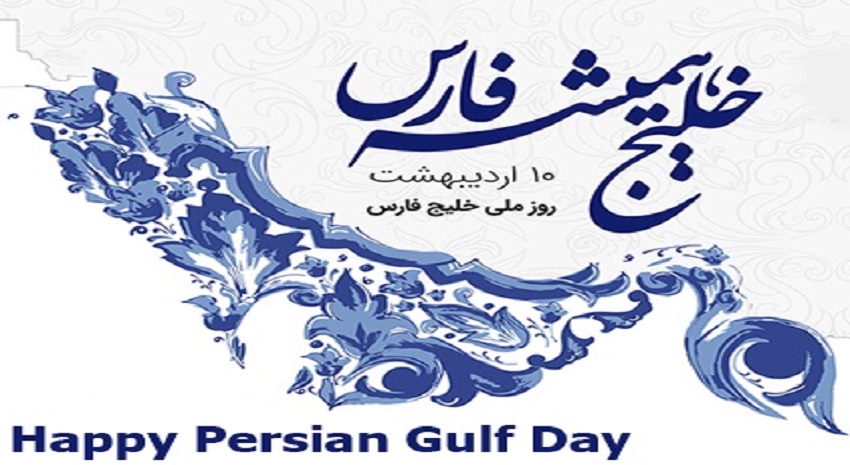National Cartographic Center of Iran commemorates:
Persian Gulf National Day
The National Cartographic Center of Iran commemorates the arrival of the National Persian Gulf Day, which falls on Ordibehesht 1۱0 (April 30).

The National Cartographic Center of Iran commemorates the arrival of the National Persian Gulf Day, which falls on Ordibehesht 10 (April 30).
Throughout the history of the region, which has been full of ups and downs, the Persian Gulf, this civilization-making span of water, has constantly been named the Persian Gulf or called by its equivalents in all foreign languages.
From millennia B.C. up until now, the Persian Gulf has always been referred to with the same ancient name or the ‘Persian Sea’ in a variety of books, travelogues, documents, maps, historical researches, and numerous international documents written in different languages. Historians and researchers have emphatically used the same name particularly in credible Islamic and Arabic sources of reference.
While laying emphasis on the policy of neighborliness, the government of the Islamic Republic of Iran hopes that this body of water will be a sanctuary of regional security and stability as well as a symbol of peace, friendship and co-existence among regional nations, and that others will respect the establishment of peace and security in the Persian Gulf by the littoral states.
Geographical Specifications of PERSIAN GULF
The Persian Gulf is located in the southwest of the Asian Continent at 23 to 30 degrees northern latitude and 48 to 56 degrees longitude on the south side of the vast country of Iran, with a length of 1259 kilometer. Karoun, Zohreh, Jarrahi Mond, Dalki, Hendijan, Kol and Minab are the largest and the most watery rivers that flow into the PERSIAN GULF from the Iranian Plateau. The PERSIAN GULF is a projection of water from the Indian Ocean into a part of the Iranian Plateau. The whole northern part of it is covered by the Fars Province in Iran. T hus, if we were to presume that the sea did not have a name during history and those geographers and specialists were to select a name for this gulf, doubtlessly, they would find no better name than PERSIAN GULF, because Iran (PERSIA) is the largest country adjacent to this water body which possesses the longest coast. Besides, with a population of more than 70 million it is larger than any country located at the south margin of Fars.
Name of PERSIAN GULF
The researchers, who have researched about the name of Persian Gulf, became unanimous considering the name of Persian Gulf. During all the centuries, and at least during the past 2500 years, i.e. as of the time of the powerful Pars Empire there has never been seen such a unanimity in the Middle East among writers and historians on one name during history.
Considering the historical background of the name Persian Gulf, Sir Arnold Wilson mentions in a book, published in 1928 that: "No water channel has been so significant as PERSIAN GULF to the geologists, archaeologists, geographers, merchants, politicians, excursionists, and scholars whether in past or in present. This water channel which separates the Iran Plateau from the Arabia Plate, has enjoyed an Iranian Identity since at least 2200 years ago.
Name of PERSIAN GULF in Historical Documents
No written deed has remained since the era before the Pars Empire, but in the oral history and culture, the Iranians have called the southern waters: Jam Sea, Iran Sea, Pars Sea. During the years: 559 to 330 B.C. coinciding with sovereignty of the Pars Empire on the Middle East area, especially the whole part of Persian Gulf and some parts of the Arabian Peninsula, the name of Pars Sea has been widely written in the compiled texts.
In the travel account of Pythagoras, several chapters are related to description of his travels accompanied by Darioush, a king of Achaemenid, to Shoush and Perspolis, and the area is described. From among the writings of others in the same period, there is the inscription and engraving of Darioush the great, installed at junction of waters of Arabian Gulf (Ahmar Sea) and Nile river and Rome river (current Mediterranean) which belongs to the 5th century BC where, Darioush, the king of Pars Empire has named the PERSIAN GULF Water Channel: PARS SEA. From among the other significant deeds written in this field, the world map:Hecataeus
(472 to 509 B.C.) can be stated where PERSIAN GULF and Arabian Gulf (Red Sea) have been clearly shown. Also a map has remained from Herodotus, the great historian of Greece (425-484 B.C.) which introduces Red Sea as the Arabian Gulf.
In the world map of Diseark (285-347 B.C.) too, Persian Gulf and Arabian Gulf have been clearly distinct. At the same time, many maps and deeds prepared up to the 8th century by the scientists and geographical researchers such as Hecataeus, Herodotus (father of Science of Geography), Hiparek, Claudius Batlamious, Krats Malous,…… and in the Islamic period, Mohammad Ibn Mousa Kharazmi, Abou Yousef Eshagh Kandi, Ibn Khardazabeh, Harrani (Batani), Masoudi, Abou Zeyd Balkhi, Estakhri, Ibn Houghal, Aboureyhan Birouni and others, mention that there is a wide sea at south of Iran named Pars Sea, Pars Gulf, Fars Sea, Fars Gulf, Bahre Fars, Sinus Persicus and Mare Persicum and so on.
In a book, named Persilus Aryateria, the Greek tourist of the 1st century A.D. has called the Red Sea as Arabian gulf; the Indian ocean has been named Aryateria Sea; the waters at Oman Coast is called Pars Sea; Barbarus region (between Oman and Yemen coast are called belonging to Pars, and the Gulf located at south side of Iran is named: PERSIAN GULF. By describing the water body, the life of Persians living at both sides have also been confirmed.








comment